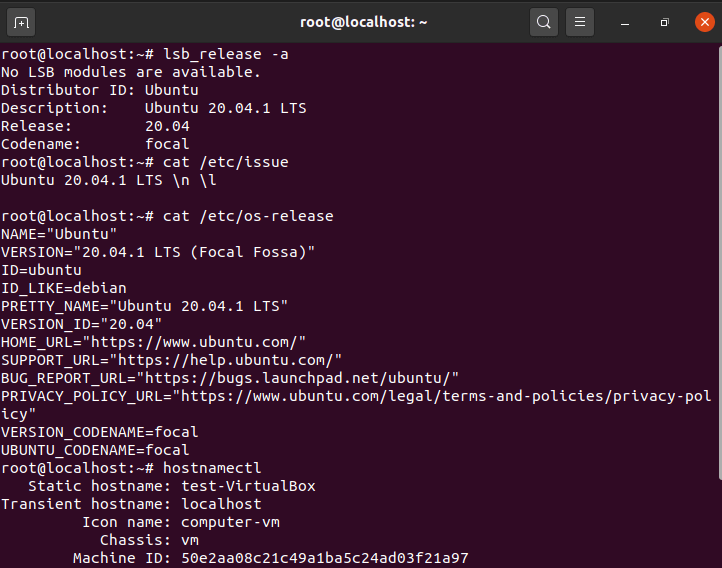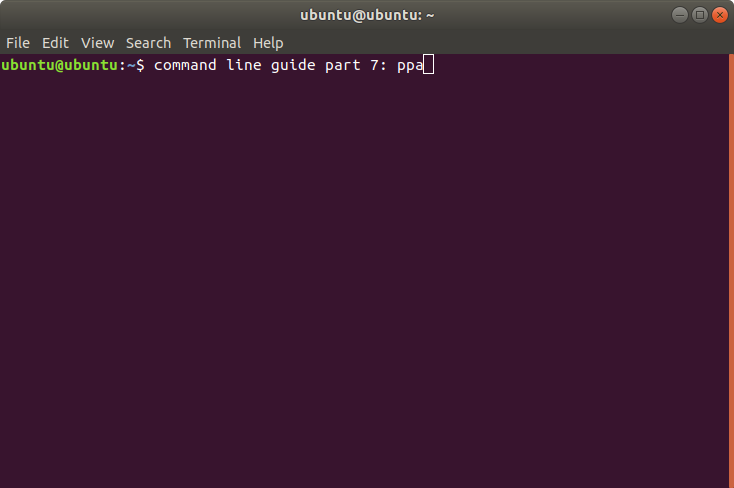
- #UBUNTU VERSION COMMAND LINE MOVIE#
- #UBUNTU VERSION COMMAND LINE INSTALL#
- #UBUNTU VERSION COMMAND LINE UPDATE#
#UBUNTU VERSION COMMAND LINE MOVIE#
These days you'll find Jordan hosting movie streaming simulcasts with his friends over Discord, building VR-ready gaming PCs, or reviewing the latest Wi-Fi routers. He also wrote and edited product descriptions for an e-commerce store for four years. Jordan earned a bachelor of arts in English in 2016, and he's coached college students on writing effectively and utilizing education technology. Beyond technology, he's also professionally written on agriculture business for Ozarks Farm & Neighbor, edited proposals for non-profits, and presented at a writer's conference on superheroes and culture. Prior to getting started at How-To Geek, Jordan published articles for MakeUseOf about Linux commands, free and open-source software, and online privacy. He's repaired his own smartphones, hosted home cloud servers, and revived old computers with Linux. As a kid, he learned object scripting through the MS-DOS game engine ZZT, and he later taught himself the basics of Python programming. Jordan started writing technology guides in 2020, but his technology and writing experience extends far and wide. Note: The command provides the version of the MySQL client utility. The MySQL client version in the example above is 10.4.5-MariaDB. This command works on Windows, OS X, and Linux distributions including Ubuntu.
#UBUNTU VERSION COMMAND LINE INSTALL#
The app may have its own built-in updating procedure, or you may need to again download and install the latest version. Use this in the terminal to show the details about the installed Ubuntu 'version': lsbrelease -a This may be more verbose than you need - maybe you just wanted to see 15.4 It can be shown separately by the option -r (-release): lsbrelease -r Release: 15.04 Add -s (-short) for use in a script: lsbrelease -r -s 15. mysql -V The command mysql V is not OS specific. That means that if you downloaded and installed an app from a website, it won't get updated. Keep in mind, however, that these updating methods only upgrade packages that you installed through Ubuntu's enabled repositories.


The instructions below will work much the same for them.
#UBUNTU VERSION COMMAND LINE UPDATE#
Others allow you to update through an application browser, like Elementary OS's AppStore. However, in this instance, you should use apt-get instead of apt, and follow the upgrade with the dist-upgrade option to ensure your server stays completely up to date. Some Ubuntu-based distros have an app that's different but similar to Software Updater, like Linux Mint's Update Manager. Update Ubuntu Server in the Command Line Updating an Ubuntu server is essentially the same experience as updating an Ubuntu desktop through the command line. Verify that youve installed Go by opening a command prompt and typing the following command: go version Confirm that the command prints the installed. Ubuntu and most of its derivatives offer two methods for updating: a command-line interface tool (called APT) for those who don't mind using the terminal, and an app called Software Updater for those who prefer a comfortable desktop experience. Software Updater in fact uses APT in the background, managing it for you so you don't have to remember any commands.


 0 kommentar(er)
0 kommentar(er)
